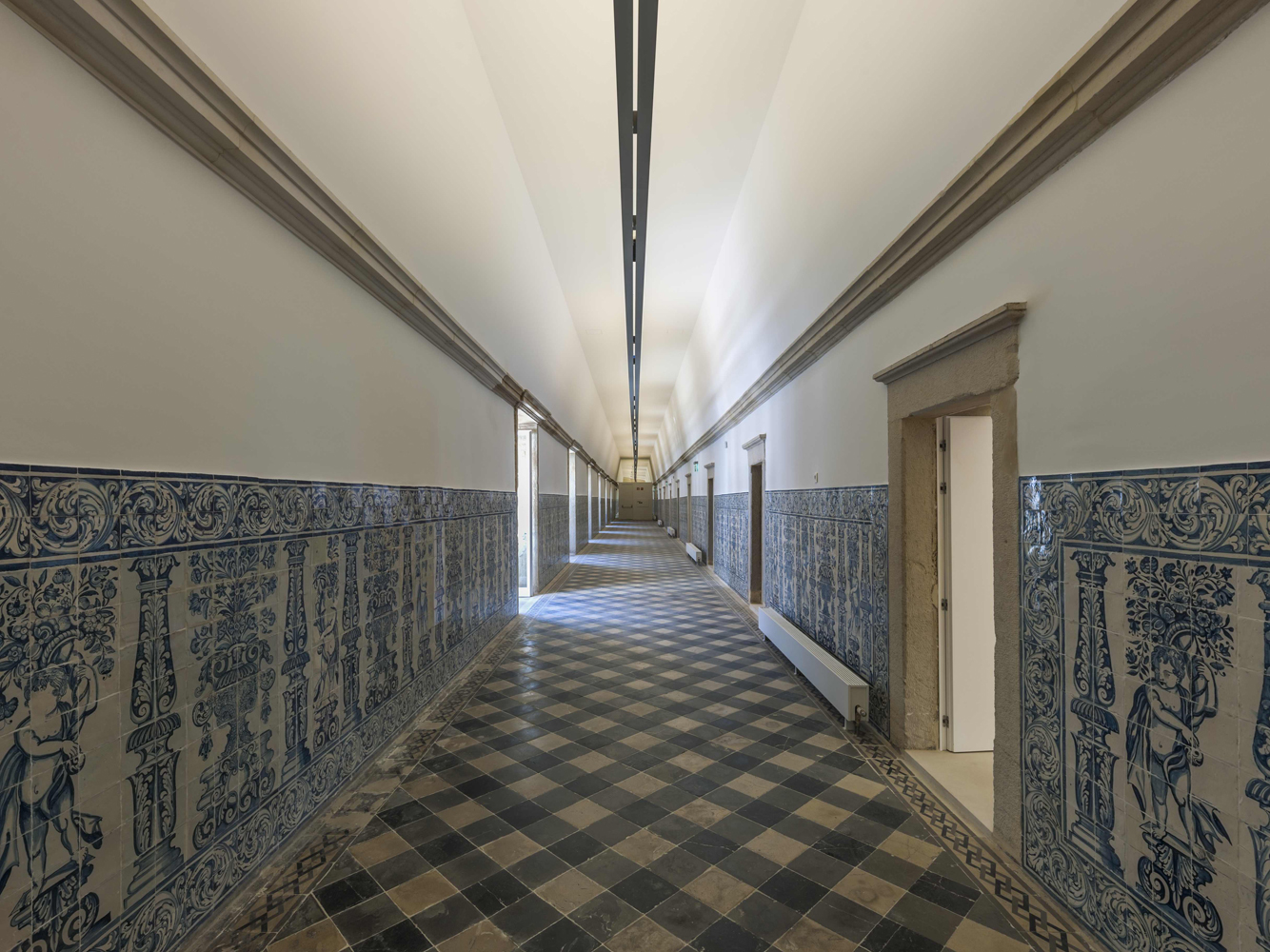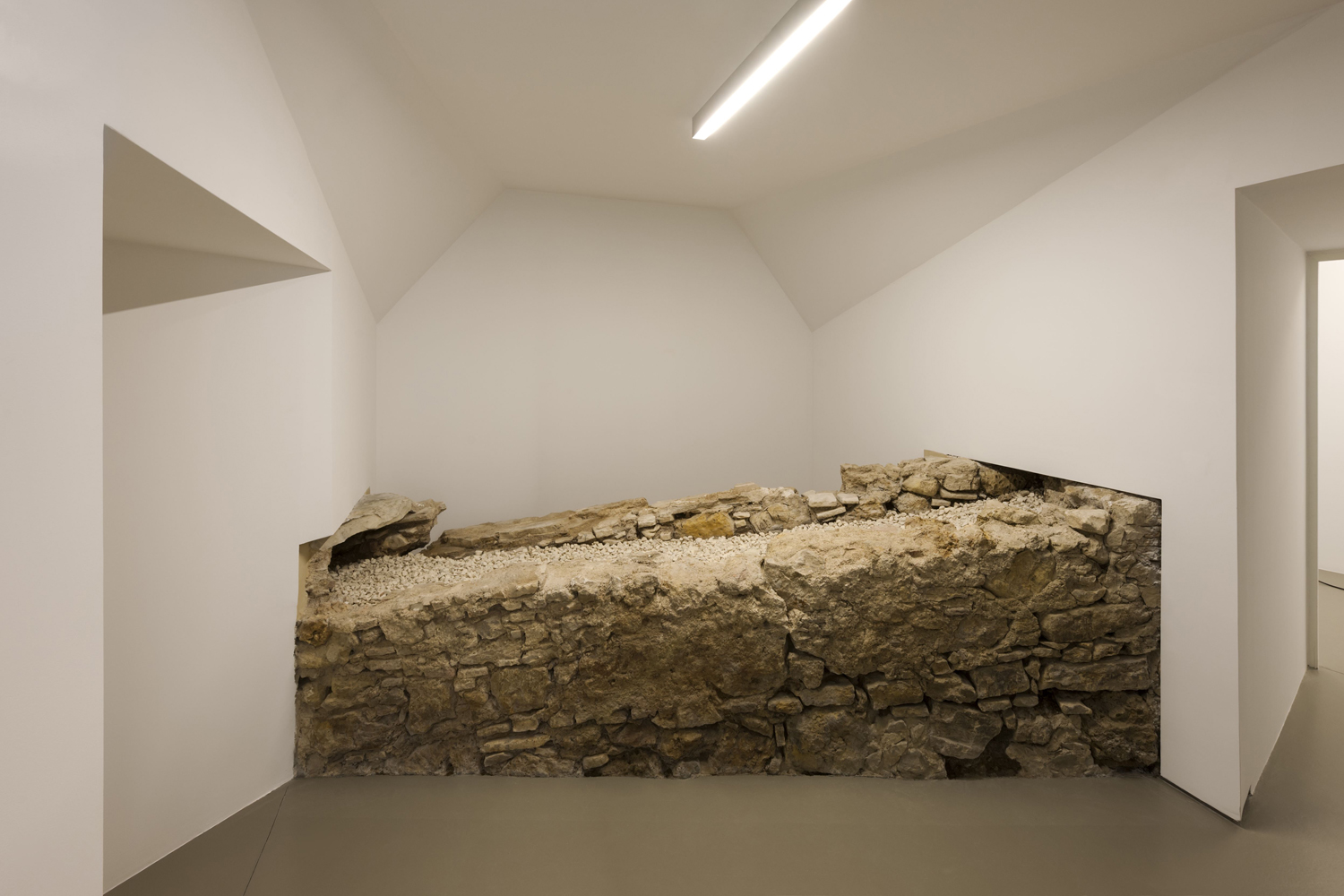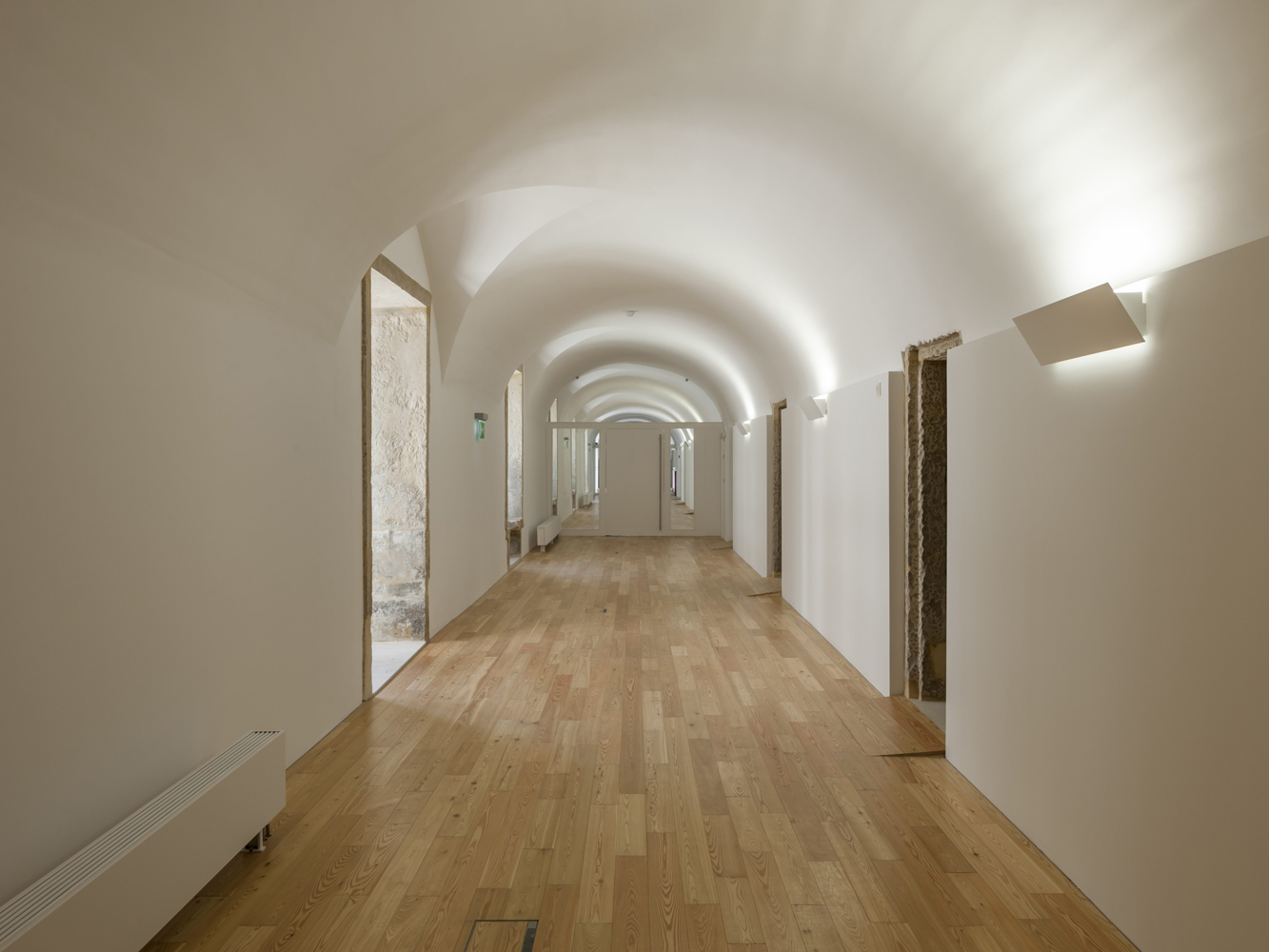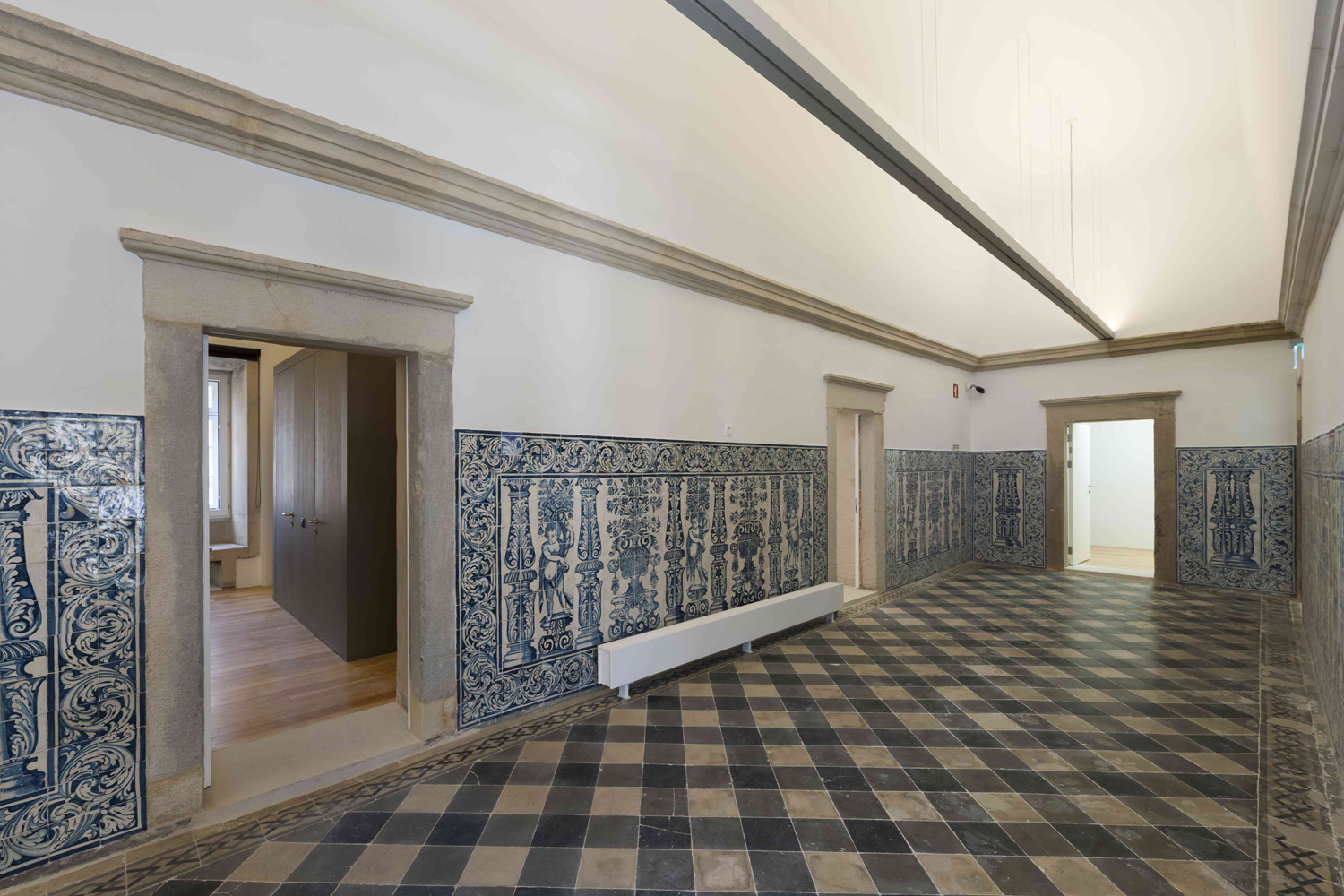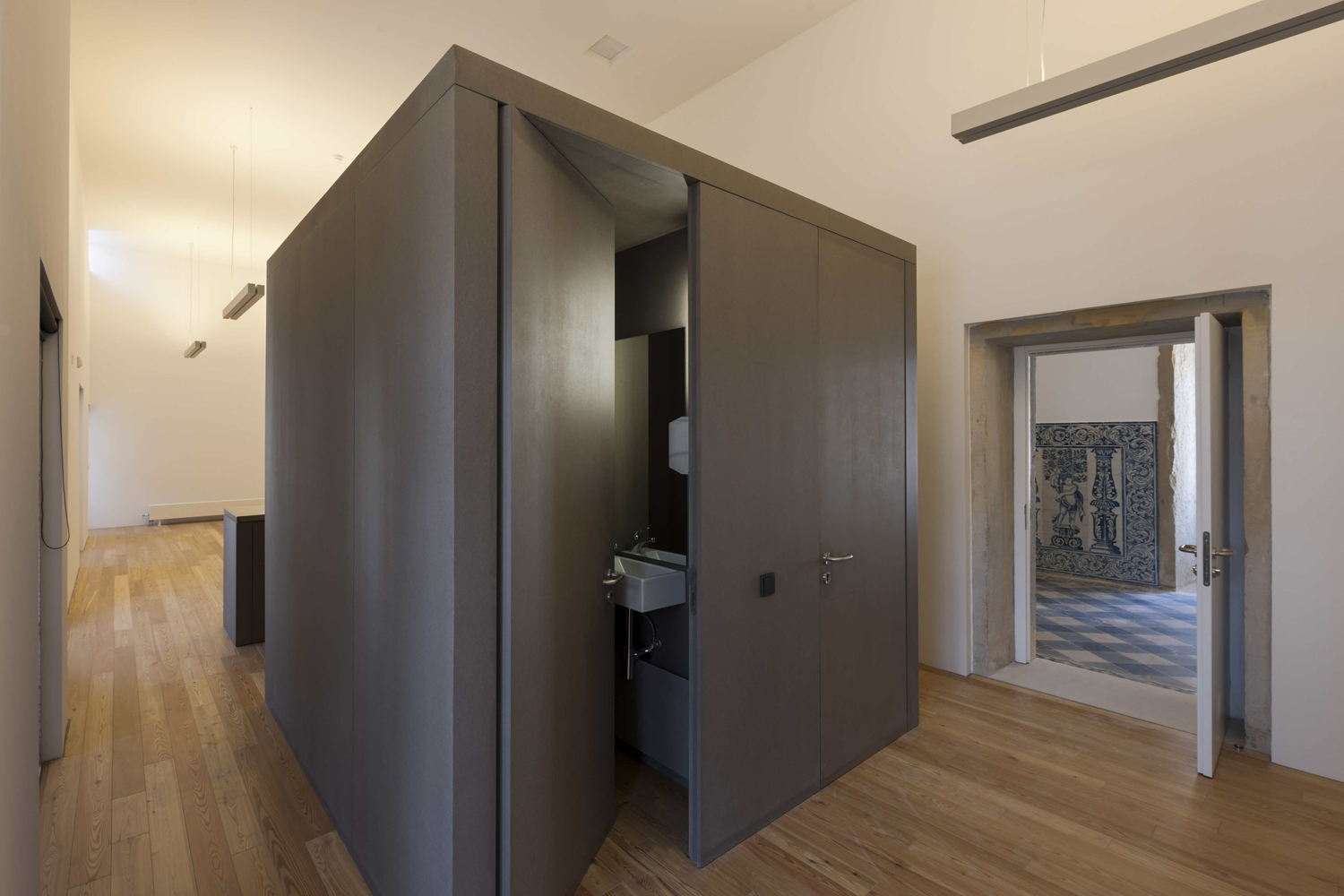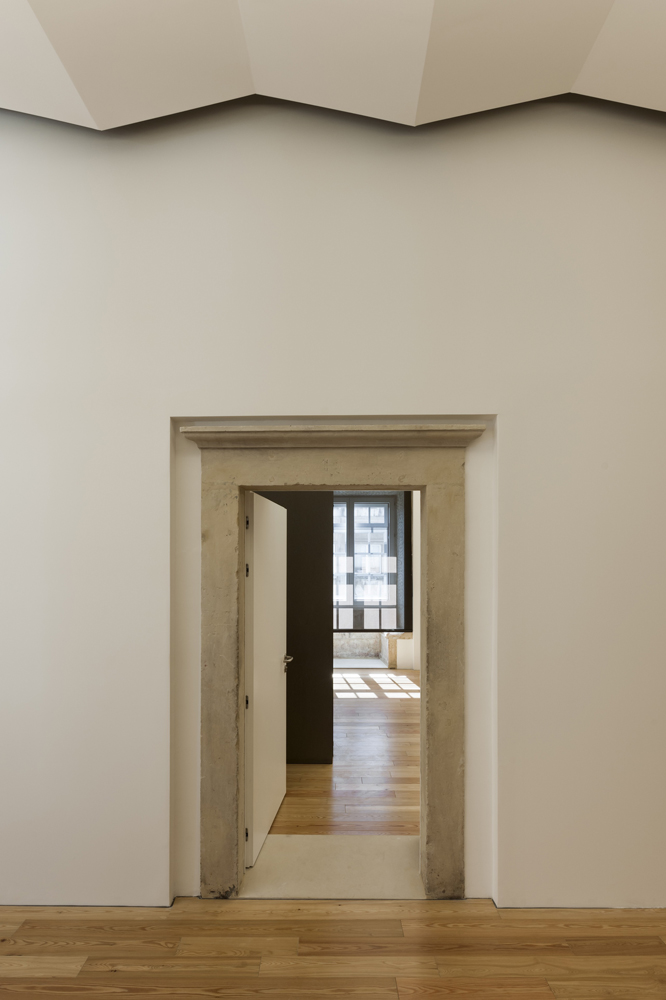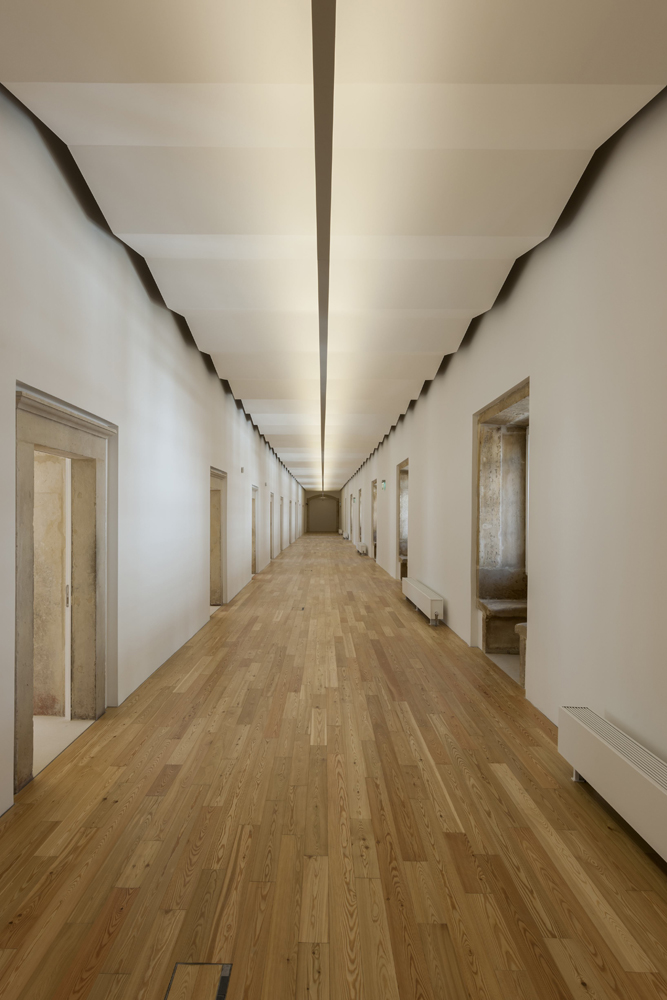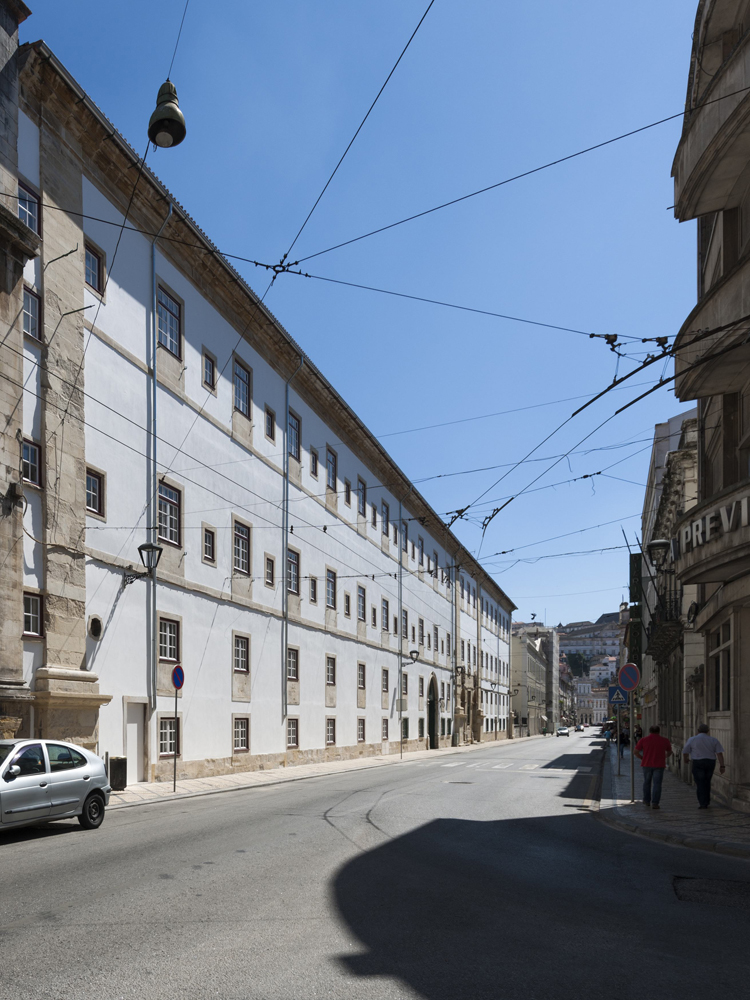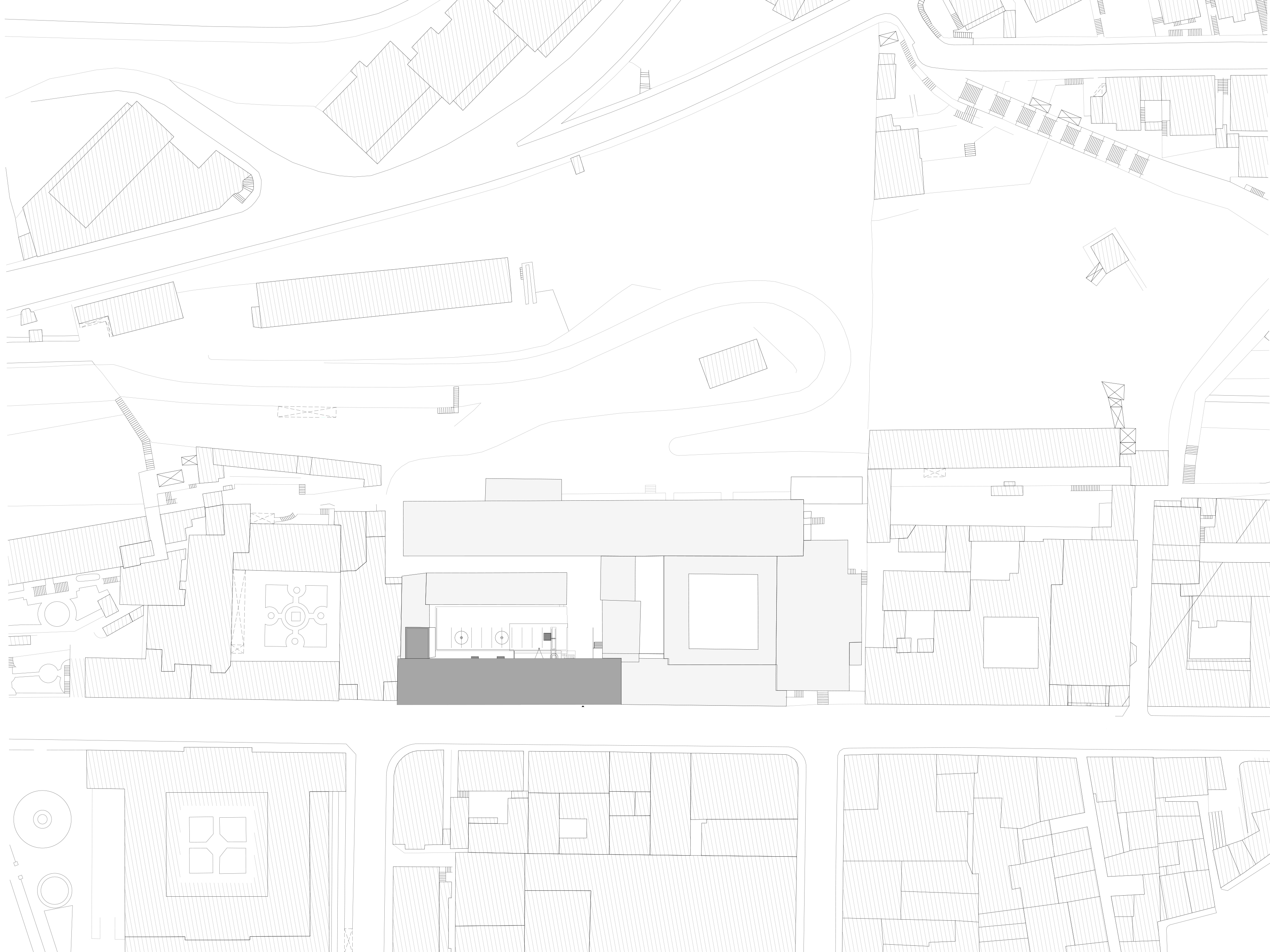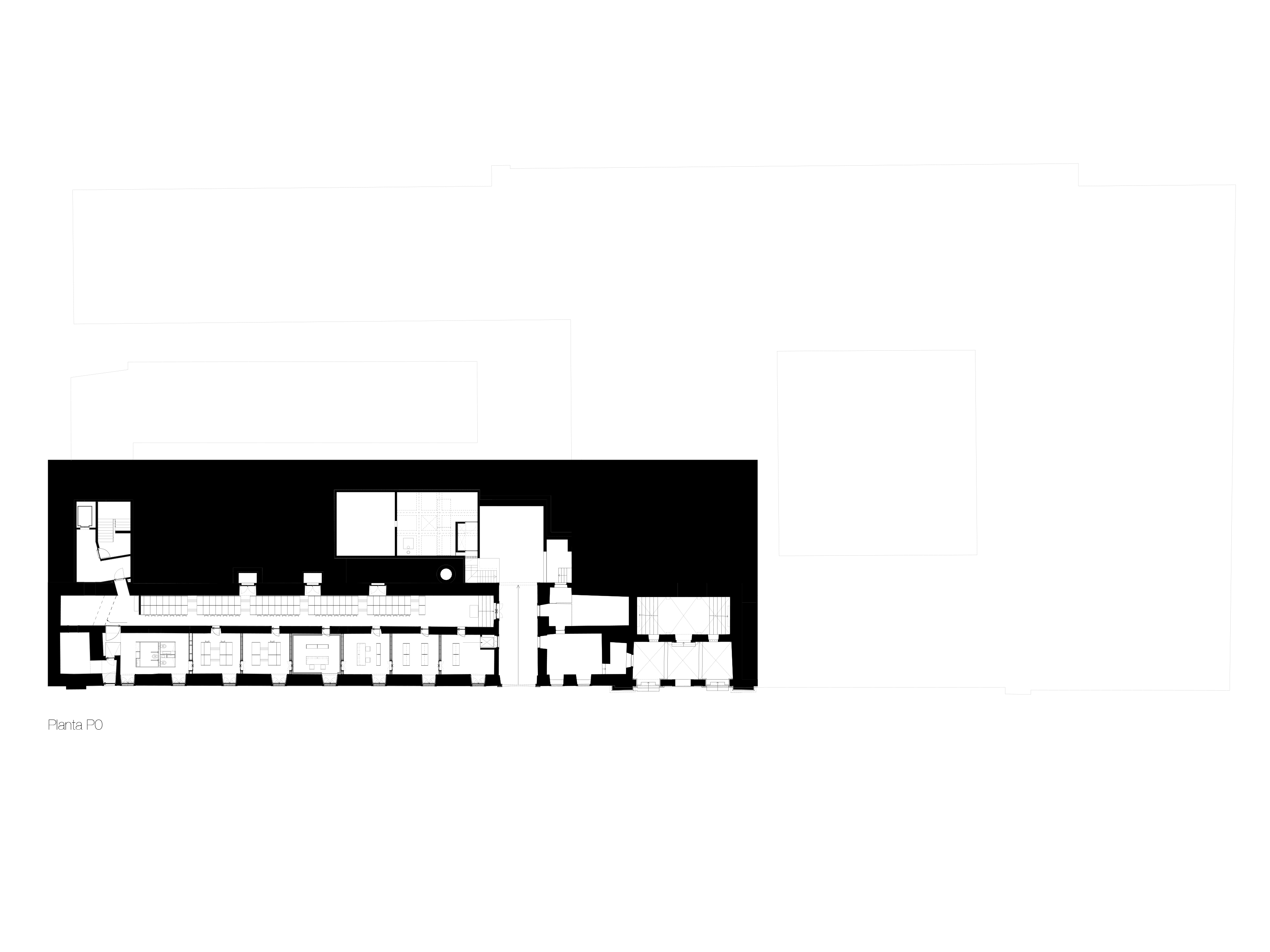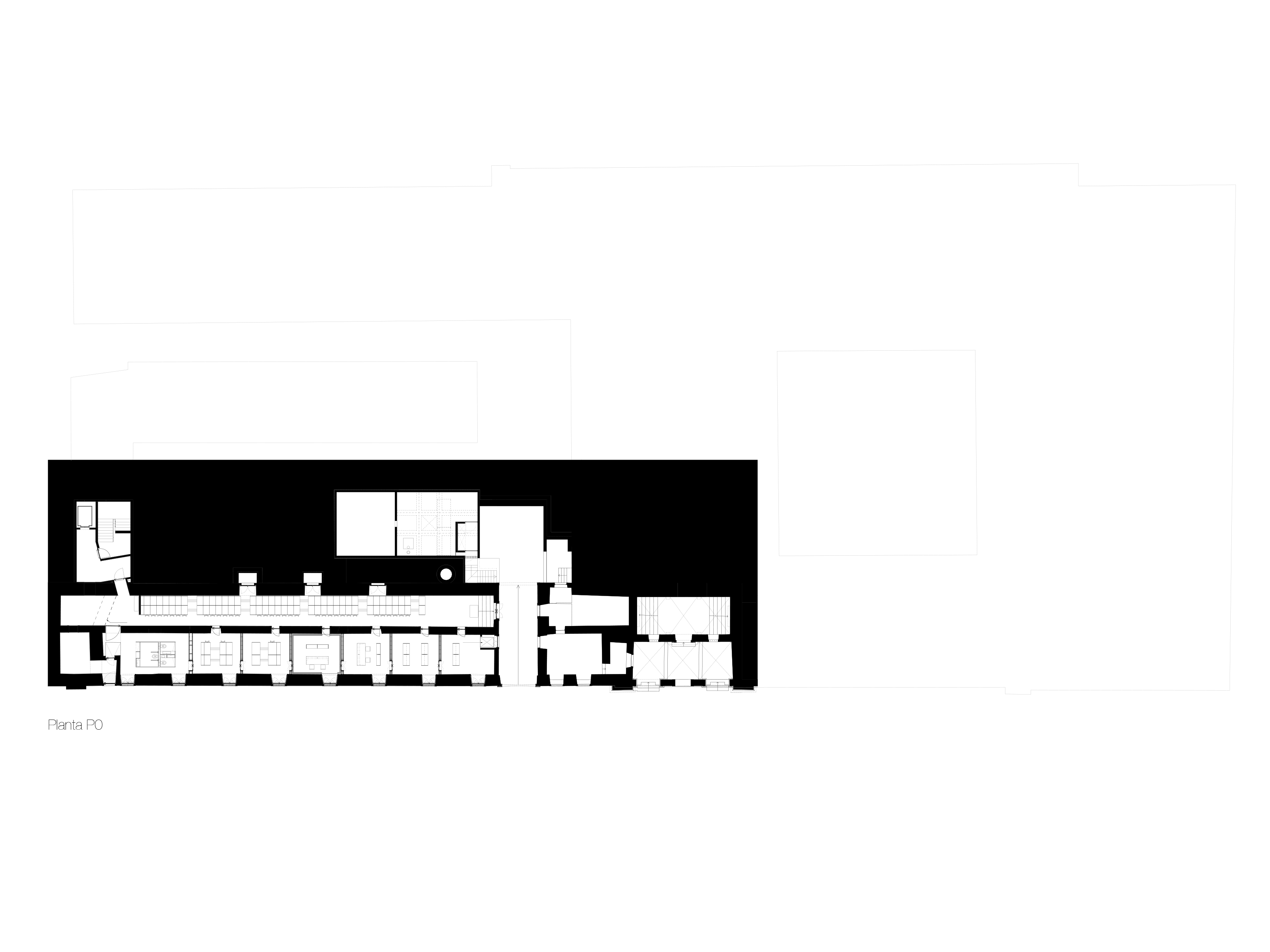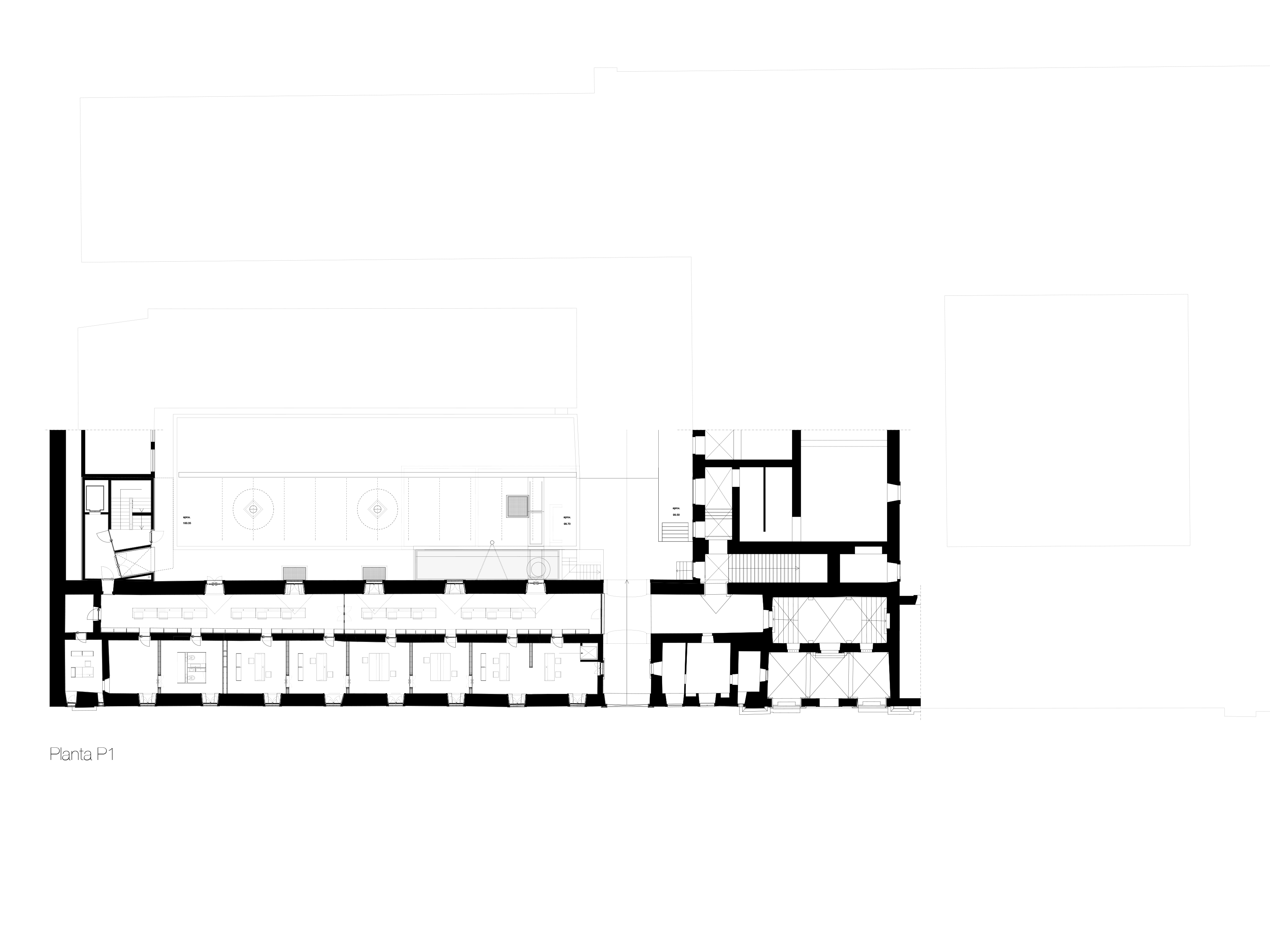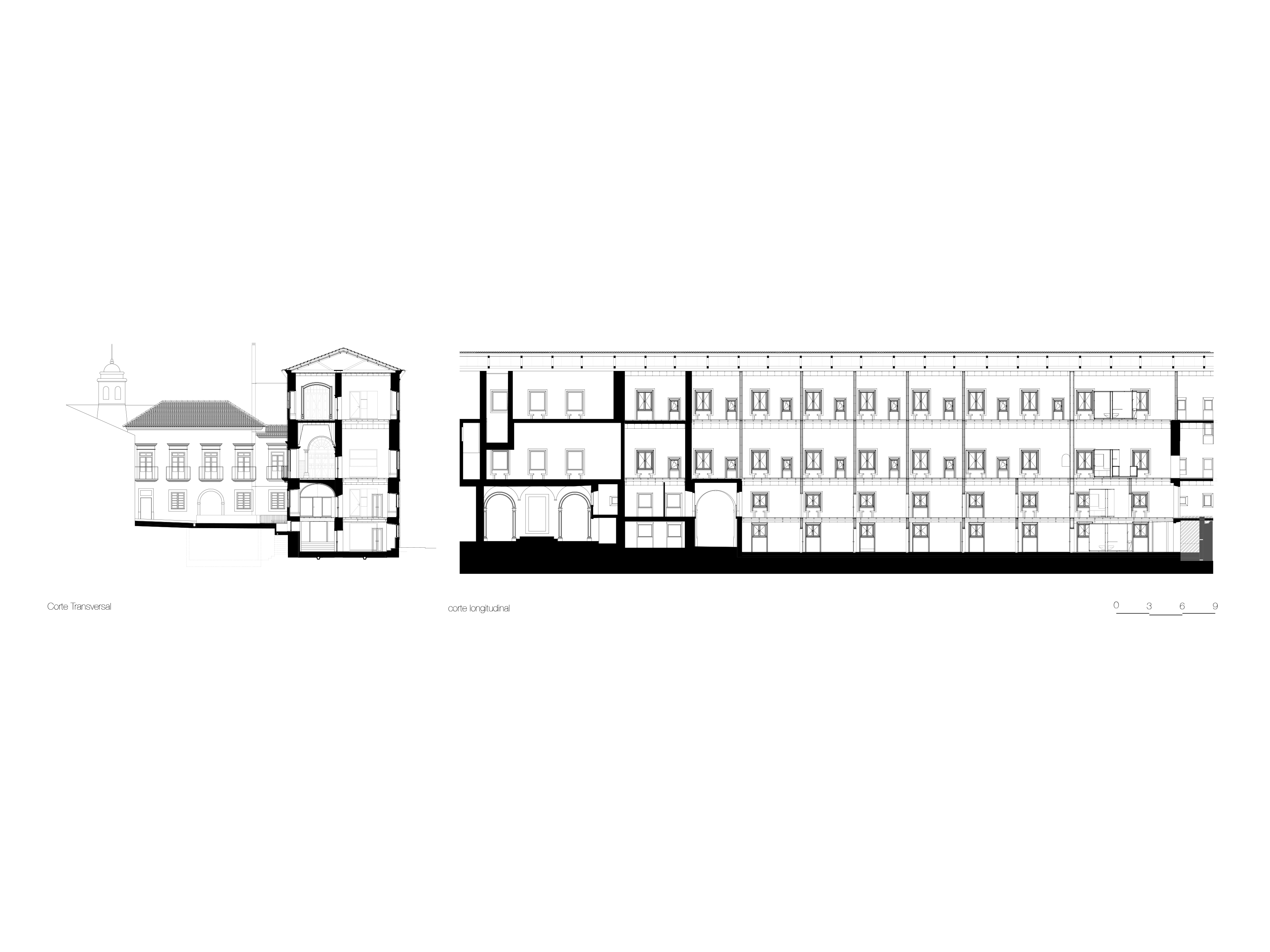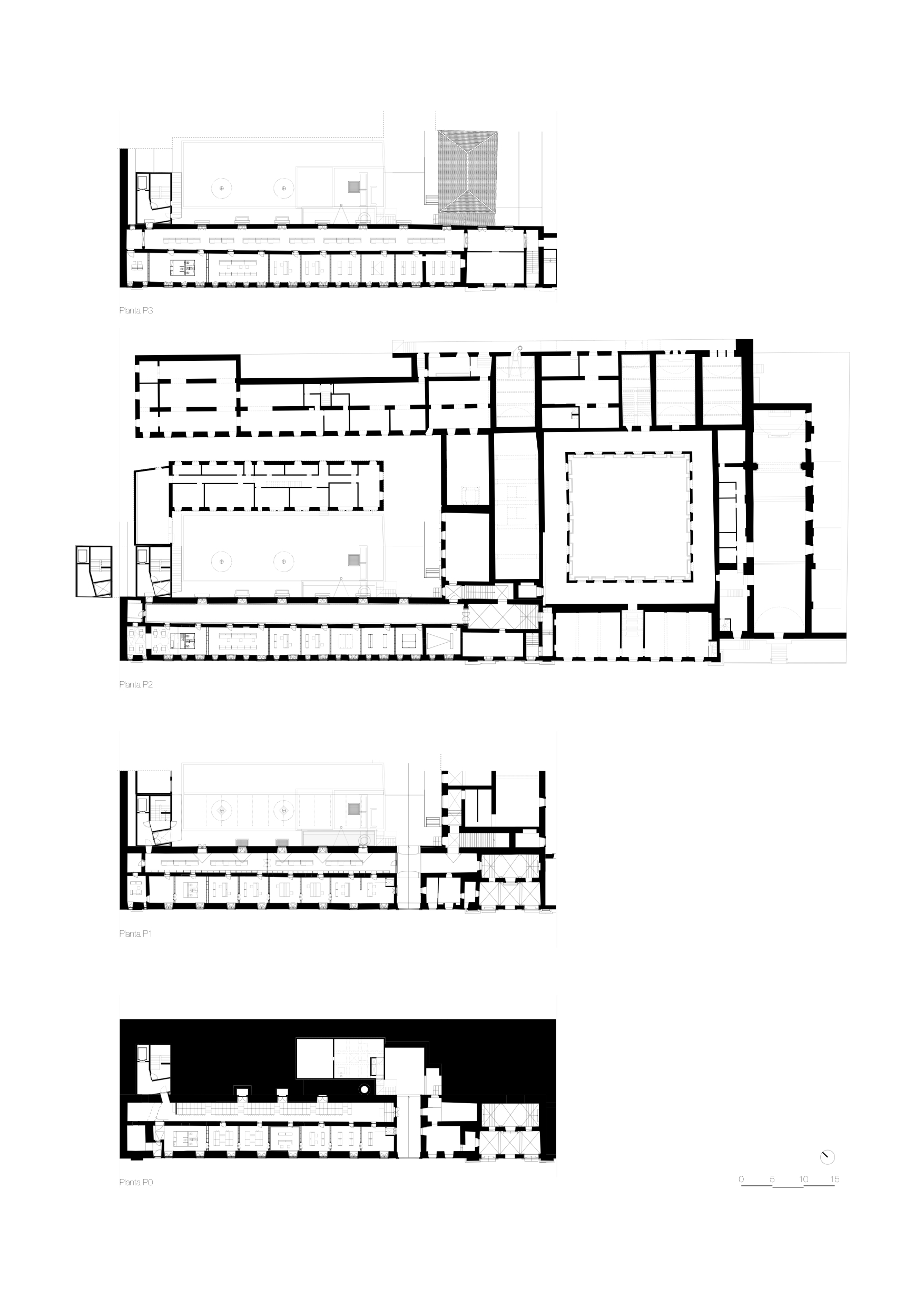12-14,
25 April Documentation Centre
The revolution of 25 April 1974 is a milestone and model for recent Portuguese modernity.
In recent years many former monasteries and colleges have been converted to a variety of new uses, such as barracks, hotels, warehouses, schools and hospitals.
Here an interior courtyard, its original proportions adapted to the site and the hill it backs on to, was later occupied by an L-shaped wing of questionable architectural value. Its permanence no longer deemed necessary, and after the occupants – a Military Police brigade – had moved to more appropriate premises, it could be nally demolished.
The rhythmic effect of the cell spaces in the college building now took on differing occupation scenarios without forfeiting any of their character.
The building’s typology and spatial division meant that it was highly exible, as reflected by the wide range of uses the spaces served over the centuries. Our design acknowledges – if not to say, enhances – the intrinsic formal autonomy of the existing structure.
Assigning things to a time that is not theirs, or giving them forms that conceal their functions, is a licentious attitude to be avoided.
Irony must be used with restraint if one is to achieve the maximum effect.
In recent years many former monasteries and colleges have been converted to a variety of new uses, such as barracks, hotels, warehouses, schools and hospitals.
Here an interior courtyard, its original proportions adapted to the site and the hill it backs on to, was later occupied by an L-shaped wing of questionable architectural value. Its permanence no longer deemed necessary, and after the occupants – a Military Police brigade – had moved to more appropriate premises, it could be nally demolished.
The rhythmic effect of the cell spaces in the college building now took on differing occupation scenarios without forfeiting any of their character.
The building’s typology and spatial division meant that it was highly exible, as reflected by the wide range of uses the spaces served over the centuries. Our design acknowledges – if not to say, enhances – the intrinsic formal autonomy of the existing structure.
Assigning things to a time that is not theirs, or giving them forms that conceal their functions, is a licentious attitude to be avoided.
Irony must be used with restraint if one is to achieve the maximum effect.
